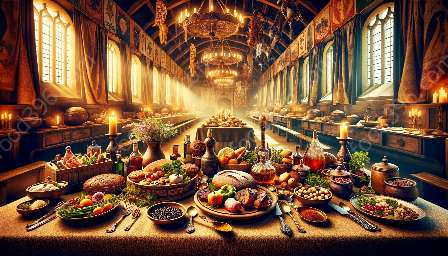The medieval period, often referred to as the Middle Ages, was a time of great change and development in many aspects of life, including cuisine. The dietary habits and restrictions during this era were influenced by various factors such as social status, religious beliefs, and availability of ingredients. Understanding the culinary history of this time period allows us to appreciate the origins of many of today's popular dishes and cooking traditions.
Medieval Cuisine History
Medieval cuisine is a rich tapestry of flavors, ingredients, and cooking techniques that have had a lasting impact on the culinary world. During this era, food was a central element of daily life and was often closely tied to religious and social practices.
Factors Influencing Dietary Habits
Several factors influenced the dietary habits and restrictions during the medieval period:
- Social Status: The type of food consumed varied greatly depending on one's social standing. The nobility often enjoyed lavish feasts with exotic spices and meats, while the lower classes had more limited access to certain ingredients and relied heavily on grains and vegetables.
- Religious beliefs: The Christian calendar dictated periods of fasting and abstinence, influencing the types of food consumed during specific times of the year. Meat and dairy products were often restricted during Lent and other religious observances.
- Availability of ingredients: The accessibility of certain ingredients also played a significant role in shaping dietary habits. Peasants and farmers relied on locally sourced produce and grains, while the wealthy had access to a wider variety of imported goods.
Cuisine History
The history of cuisine is deeply intertwined with the evolution of human societies. Across different eras and cultures, food has been a reflection of social, economic, and technological developments.
Key Dishes of the Medieval Period
Several iconic dishes emerged during the medieval period, showcasing the diverse culinary traditions of the time:
- Pottage: A thick soup made from a mixture of grains, vegetables, and sometimes meat, pottage was a staple in medieval diets and varied in flavor and texture based on available ingredients.
- Roast Meats: Roasting meats over an open fire was a common cooking method, and various meats such as beef, venison, and poultry were enjoyed by the nobility.
- Sweets and Confections: Sugar, a luxury ingredient during this era, was used to create sweet treats and confections, often flavored with spices such as cinnamon and ginger.
Role of Spices and Herbs
Spices and herbs played a crucial role in medieval cooking, not only for flavoring dishes but also for preserving food. Commonly used spices included cinnamon, nutmeg, cloves, and black pepper, which added depth and complexity to many dishes.
Dietary Restrictions and Fasting
Religious fasting and dietary restrictions were integral to medieval culinary practices. The observance of meatless days and periods of abstinence from certain foods were guided by religious traditions and influenced the availability of ingredients.
Legacy of Medieval Cuisine
The dietary habits and restrictions of the medieval period have left a lasting legacy on contemporary cuisine. Many traditional dishes and cooking techniques have been passed down through generations, influencing modern culinary practices and the way we understand food and its cultural significance.

